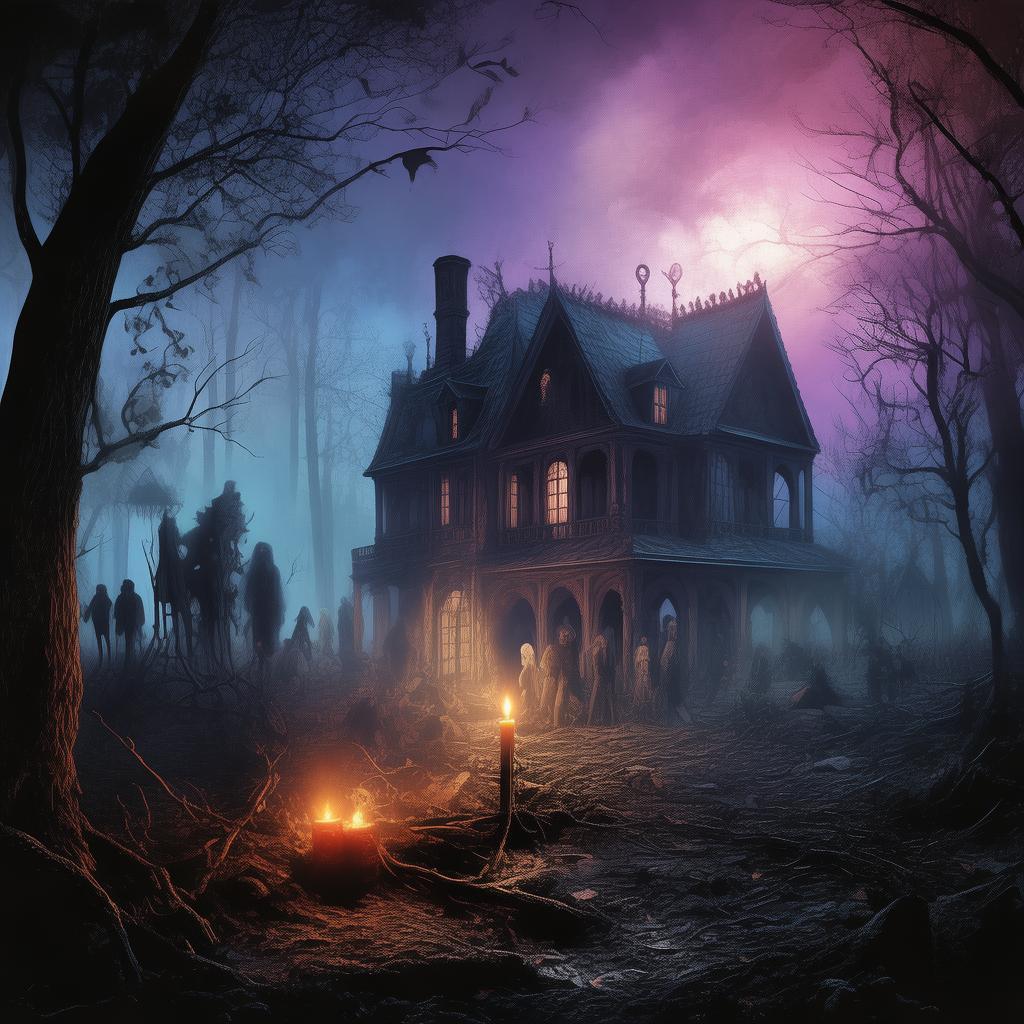Whispers in the Attic: The Haunting of the Forgotten Child
In the heart of a quaint, fog-shrouded town, there stood an old house that had seen better days. Its once-proud facade was now marred by peeling paint and overgrown ivy, but the house itself was a beacon of mystery to those who dared to approach. Among the townsfolk, it was whispered that the house was haunted, but the stories were mere fabrications, meant to scare away the curious.
Eliza, a young woman in her late twenties, had always been fascinated by the supernatural. After the death of her parents, she inherited the house from her late grandmother, a woman who had always spoken in riddles and cryptic phrases. With her inheritance, Eliza decided to move to the town and turn the old house into a cozy home, hoping to find some solace in the tranquility of her new surroundings.
The house was a labyrinth of narrow hallways and hidden rooms, each more decrepit than the last. Eliza spent her first few days unpacking, trying to make the place feel like home. It was during one of these unpacking sessions that she stumbled upon an old, dusty attic door. The handle was rusted and the door creaked ominously as she pushed it open.

The attic was a cavernous space, filled with cobwebs and the scent of decay. The air was thick and heavy, and Eliza felt a chill run down her spine as she stepped inside. The room was filled with old furniture and boxes, and she began to sift through the clutter, hoping to find something of value or perhaps a memento of her grandmother.
As she moved through the attic, Eliza heard faint whispers, as if someone were calling her name. She dismissed the sound as the wind rustling through the old windows, but the whispers grew louder, more insistent. She turned to see if anyone was there, but the room was empty.
Determined to find the source of the whispers, Eliza continued her search. She found a small, dusty box tucked away in a corner and opened it to find a collection of old photographs and letters. Among them was a photograph of a young girl, her eyes filled with fear. The photograph was dated from the 1920s, and the girl looked exactly like the whispers she had heard.
Intrigued, Eliza began to read the letters. They were written by a woman named Clara, who had lived in the house many years ago. Clara's letters spoke of a daughter she had lost, a child who had mysteriously vanished one night. The letters were filled with guilt and sorrow, and Eliza felt a pang of empathy for the woman who had suffered such a tragic loss.
As Eliza read the letters, she realized that the whispers were coming from the photograph. She held the photograph close to her face, and the whispers grew louder, more desperate. Suddenly, the photograph began to flicker, and a ghostly figure of a young girl materialized before her eyes.
The girl was Clara's daughter, and she had been trapped in the photograph for decades, her spirit unable to rest until her fate was uncovered. Clara had tried to uncover the truth, but she had been driven to madness and had eventually taken her own life, leaving the photograph to haunt the house.
Eliza, determined to set Clara's daughter free, began to piece together the clues left behind by Clara. She discovered that the child had been taken by a notorious child trafficker who had been hiding out in the town. With the help of a local historian and a few other townsfolk, Eliza tracked down the trafficker's final resting place and retrieved the photograph from his grave.
As she placed the photograph in the ground, the ghostly girl vanished, and the whispers ceased. Clara's spirit was finally at peace, and Eliza felt a sense of closure. She had helped to free a soul trapped for decades, and in doing so, she had also uncovered the truth about her grandmother's past.
Eliza returned to the old house, now feeling a sense of purpose. She had turned the house into a museum, dedicated to the story of Clara and her daughter, and the townspeople came to visit, drawn by the haunting tale. The old house, once a source of fear, had become a place of solace and remembrance, a testament to the power of compassion and the enduring bond between generations.
And so, the haunting of the forgotten child became a part of the town's folklore, a story of love, loss, and redemption that would be told for generations to come.
✨ Original Statement ✨
All articles published on this website (including but not limited to text, images, videos, and other content) are original or authorized for reposting and are protected by relevant laws. Without the explicit written permission of this website, no individual or organization may copy, modify, repost, or use the content for commercial purposes.
If you need to quote or cooperate, please contact this site for authorization. We reserve the right to pursue legal responsibility for any unauthorized use.
Hereby declared.









